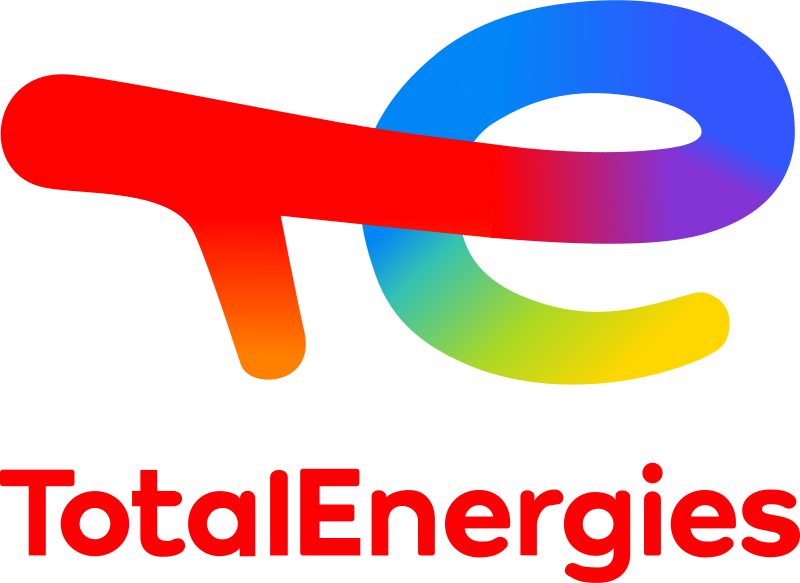Global Renewable Energy Market: By Type, By Application, By Region & Segmental Insights Trends and Forecast, 2024 – 2034
- Industry: Energy & Power
- Report ID: TNR-110-1126
- Number of Pages: 420
- Table/Charts : Yes
- June, 2024
- Base Year : 2024
- No. of Companies : 10+
- No. of Countries : 29
- Views : 10048
- Covid Impact Covered: Yes
- War Impact Covered: Yes
- Formats : PDF, Excel, PPT
Renewable energy is energy derived from natural resources that are replenished on a human timescale, such as sunlight, wind, rain, tides, waves, and geothermal heat. Unlike fossil fuels, which are finite and emit greenhouse gases when burned, renewable energy sources are sustainable and environmentally friendly. Technologies used to harness renewable energy include solar panels, wind turbines, hydroelectric dams, and geothermal plants. These energy sources play a crucial role in reducing carbon emissions, combating climate change, and ensuring energy security. By leveraging the continuous availability of natural processes, renewable energy provides a reliable and clean alternative to conventional energy sources, contributing to a sustainable and resilient energy future.
Governments worldwide are implementing supportive policies and incentives, such as tax credits, subsidies, and renewable energy mandates, to encourage the adoption of clean energy sources. Technological advancements have significantly improved the efficiency and cost-effectiveness of renewable energy systems, making them more competitive with traditional fossil fuels. Additionally, the growing desire for energy security and independence drives nations to diversify their energy portfolios, reducing reliance on imported fossil fuels. Corporate sustainability initiatives and commitments to reduce carbon footprints further fuel the demand for renewable energy. Moreover, the declining costs of solar panels, wind turbines, and energy storage solutions make renewable energy more accessible to a broader range of consumers and businesses. These factors collectively accelerate the shift towards renewable energy, underscoring its critical role in achieving a sustainable and resilient energy future. In terms of revenue, the global renewable energy market was worth US$ 1.24 Trillion in 2023, anticipated to witness CAGR of 17.8% during 2024 – 2034.
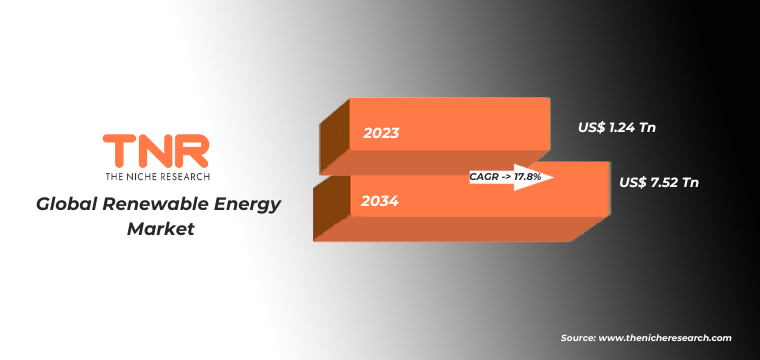
Global Renewable Energy Market Dynamics
Government Policies and Incentives: Government regulations, subsidies, and incentives promote the adoption of renewable energy sources, driving market growth. Policies like tax credits, feed-in tariffs, and renewable energy mandates support investment and development. Innovations in renewable energy technologies, such as more efficient solar panels, advanced wind turbines, and improved energy storage systems, make renewable energy more viable and cost-effective.
Environmental Concerns: Increasing awareness of climate change and environmental degradation drives demand for clean energy solutions, leading to greater investment in renewable energy projects. Diversifying energy sources to include renewables reduces dependence on fossil fuels, enhancing energy security and stability.
High Initial Costs: The upfront capital investment required for renewable energy infrastructure, such as solar panels and wind turbines, can be significant, posing a barrier to entry. The variable nature of renewable energy sources, such as solar and wind, can lead to challenges in ensuring a stable and continuous energy supply.
Emerging Markets: Developing countries present significant growth opportunities as they invest in renewable energy infrastructure to meet rising energy demands and support economic growth. Advances in energy storage technologies, such as batteries and supercapacitors, provide Increasing corporate commitments to sustainability and carbon neutrality drive private sector investment in renewable energy projects.
Supply Chain Disruptions: The renewable energy sector relies on a complex supply chain for materials and components. Disruptions, such as those caused by geopolitical tensions or pandemics, can impact production and deployment timelines. Renewable energy projects, particularly large-scale ones like wind farms and solar parks, require significant land and can impact local ecosystems and wildlife. Changes in government policies and regulations can create uncertainty, affecting long-term planning and investment in renewable energy projects.
Solar Energy Segment Has Garnered Major Market Share in the Global Renewable Energy Market During the Forecast Period (2024 – 2034).
The growing adoption of solar energy is a major demand driver in the renewable energy sector. As countries worldwide strive to reduce carbon emissions and transition to sustainable energy sources, solar power emerges as a key solution due to its abundant availability and decreasing costs. Solar panels and related technologies require capacitors for efficient energy storage and management, ensuring stable power supply despite the intermittent nature of solar energy. Capacitors help in smoothing out voltage fluctuations and storing excess energy generated during peak sunlight hours for use during periods of low sunlight. Government incentives, subsidies, and favorable policies further accelerate the adoption of solar energy, driving demand for capacitors in solar power systems. Additionally, advancements in solar technology, such as improved photovoltaic cell efficiency and the integration of smart grid systems, increase the need for high-performance capacitors. As the global emphasis on clean energy continues to grow, the demand for capacitors in solar energy applications is expected to rise significantly, highlighting their critical role in the renewable energy landscape.
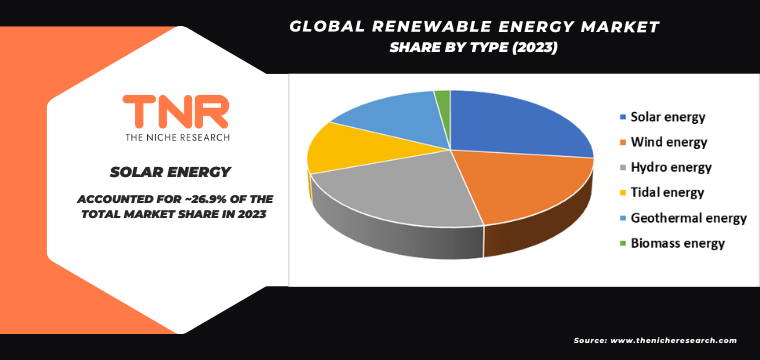
By Application Industrial Segment had the Highest Share in the Global Renewable Energy Market in 2023.
In the industrial sector, the push towards renewable energy adoption is a significant demand driver for capacitors. Industries are increasingly integrating renewable energy sources like solar and wind power to reduce their carbon footprint and enhance energy efficiency. Capacitors are vital in these systems for energy storage, power conditioning, and ensuring the stability of electrical networks. They help in managing fluctuations in power supply from renewable sources, providing a consistent and reliable energy output essential for industrial operations. Moreover, the transition to smart manufacturing and Industry 4.0 technologies emphasizes the need for stable and efficient power management solutions, further boosting capacitor demand. Government incentives and policies promoting renewable energy use in industries also play a crucial role in driving this demand. As industries strive to achieve sustainability goals and optimize energy usage, the need for advanced capacitors in renewable energy systems will continue to grow, underscoring their importance in industrial applications.
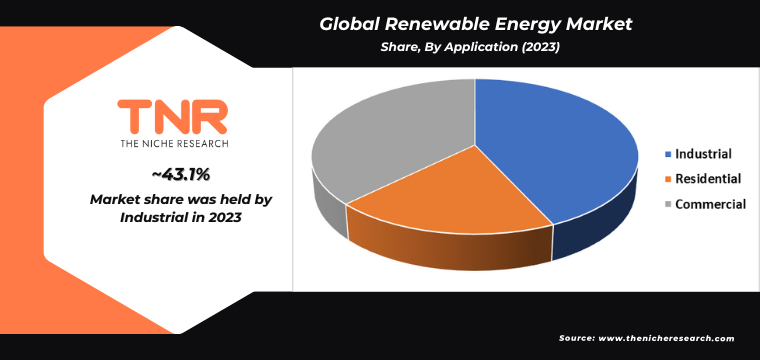
By Region, Asia Pacific Dominated the Global Renewable Energy Market in 2023.
In the Asia-Pacific region, the burgeoning renewable energy sector is a significant demand driver for capacitors. Countries like China, India, and Japan are heavily investing in renewable energy projects, including solar and wind power, to meet their growing energy needs and reduce carbon emissions. Capacitors are crucial components in these renewable energy systems for efficient energy storage and conversion. They help in smoothing out power fluctuations and ensuring stable and reliable energy supply from intermittent renewable sources. The region’s commitment to sustainability and the increasing implementation of smart grid technologies also drives the demand for advanced capacitors. Additionally, government initiatives and favorable policies supporting renewable energy adoption further bolster market growth. As the Asia-Pacific region continues to lead in renewable energy capacity expansion, the need for high-performance capacitors in energy storage and management systems will continue to rise, underpinning their crucial role in the renewable energy infrastructure.
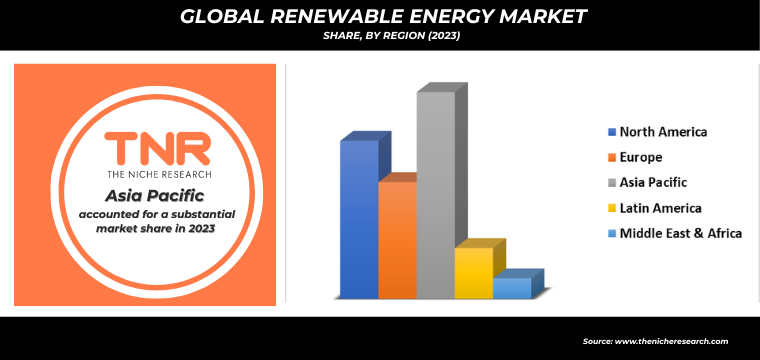
Competitive Landscape: Global Renewable Energy Market:
- ABB
- ACCIONA
- Enel Spa
- ENGIE SA
- General Electric Company
- Innergex
- LARSEN & TOUBRO LIMITED
- Masdar
- NextEra Energy, Inc.
- Schneider Electric
- Siemens Gamesa Renewable Energy, S.A.U.
- Suzlon Energy Limited
- Tata Power
- Other Industry Participants
Global Renewable Energy Market Scope
| Report Specifications | Details |
| Market Revenue in 2023 | US$ 1.24 Tn |
| Market Size Forecast by 2034 | US$ 7.52 Tn |
| Growth Rate (CAGR) | 17.8% |
| Historic Data | 2016 – 2022 |
| Base Year for Estimation | 2023 |
| Forecast Period | 2024 – 2034 |
| Report Inclusions | Market Size & Estimates, Market Dynamics, Competitive Scenario, Trends, Growth Factors, Market Determinants, Key Investment Segmentation, Product/Service/Solutions Benchmarking |
| Segments Covered | By Type, By Application, By Region |
| Regions Covered | North America, Europe, Asia Pacific, Middle East & Africa, Latin America |
| Countries Covered | U.S., Canada, Mexico, Rest of North America, France, The UK, Spain, Germany, Italy, Nordic Countries (Denmark, Finland, Iceland, Sweden, Norway), Benelux Union (Belgium, The Netherlands, Luxembourg), Rest of Europe, China, Japan, India, New Zealand, Australia, South Korea, Southeast Asia (Indonesia, Thailand, Malaysia, Singapore, Rest of Southeast Asia), Rest of Asia Pacific, Saudi Arabia, UAE, Egypt, Kuwait, South Africa, Rest of Middle East & Africa, Brazil, Argentina, Rest of Latin America |
| Key Players | ABB, ACCIONA, Enel Spa, ENGIE SA, General Electric Company, Innergex, LARSEN & TOUBRO LIMITED, Masdar, NextEra Energy, Inc, Schneider Electric, Siemens Gamesa Renewable Energy, S.A.U., Suzlon Energy Limited, Tata Power |
| Customization Scope | Customization allows for the inclusion/modification of content pertaining to geographical regions, countries, and specific market segments. |
| Pricing & Procurement Options | Explore purchase options tailored to your specific research requirements |
| Contact Details | Consult With Our Expert
Japan (Toll-Free): +81 663-386-8111 South Korea (Toll-Free): +82-808- 703-126 Saudi Arabia (Toll-Free): +966 800-850-1643 United Kingdom: +44 753-710-5080 United States: +1 302-232-5106 E-mail: askanexpert@thenicheresearch.com
|
Global Renewable Energy Market
By Type
- Solar energy
- Wind energy
- Hydro energy
- Tidal energy
- Geothermal energy
- Biomass energy
By Application
- Industrial
- Food & Beverage industries
- Aviation industry
- Automotive industry
- Others
- Residential
- Commercial
- Hotels
- Schools
- Office Buildings
- Others
By Region
- North America (U.S., Canada, Mexico, Rest of North America)
- Europe (France, The UK, Spain, Germany, Italy, Nordic Countries (Denmark, Finland, Iceland, Sweden, Norway), Benelux Union (Belgium, The Netherlands, Luxembourg), Rest of Europe)
- Asia Pacific (China, Japan, India, New Zealand, Australia, South Korea, Southeast Asia (Indonesia, Thailand, Malaysia, Singapore, Rest of Southeast Asia), Rest of Asia Pacific)
- Middle East & Africa (Saudi Arabia, UAE, Egypt, Kuwait, South Africa, Rest of Middle East & Africa)
- Latin America (Brazil, Argentina, Rest of Latin America)
Report Layout:
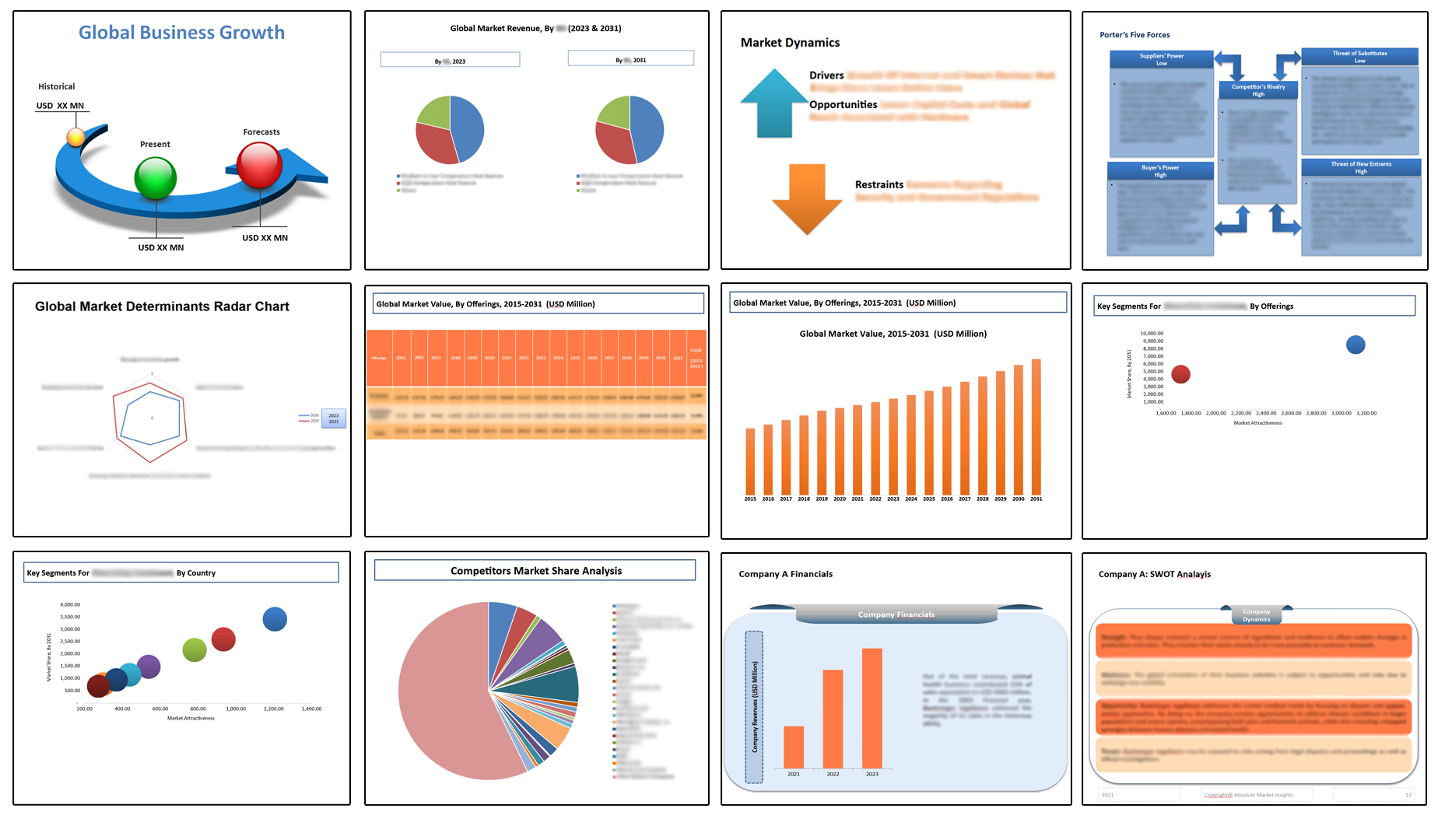
Table of Contents
Note: This ToC is tentative and can be changed according to the research study conducted during the course of report completion.
**Exclusive for Multi-User and Enterprise User.
Global Renewable Energy Market
By Type
- Solar energy
- Wind energy
- Hydro energy
- Tidal energy
- Geothermal energy
- Biomass energy
By Application
- Industrial
- Food & Beverage industries
- Aviation industry
- Automotive industry
- Others
- Residential
- Commercial
- Hotels
- Schools
- Office Buildings
- Others
By Region
- North America (U.S., Canada, Mexico, Rest of North America)
- Europe (France, The UK, Spain, Germany, Italy, Nordic Countries (Denmark, Finland, Iceland, Sweden, Norway), Benelux Union (Belgium, The Netherlands, Luxembourg), Rest of Europe)
- Asia Pacific (China, Japan, India, New Zealand, Australia, South Korea, Southeast Asia (Indonesia, Thailand, Malaysia, Singapore, Rest of Southeast Asia), Rest of Asia Pacific)
- Middle East & Africa (Saudi Arabia, UAE, Egypt, Kuwait, South Africa, Rest of Middle East & Africa)
- Latin America (Brazil, Argentina, Rest of Latin America)
The Niche Research approach encompasses both primary and secondary research methods to provide comprehensive insights. While primary research is the cornerstone of our studies, we also incorporate secondary research sources such as company annual reports, premium industry databases, press releases, industry journals, and white papers.
Within our primary research, we actively engage with various industry stakeholders, conducting paid interviews and surveys. Our meticulous analysis extends to every market participant in major countries, allowing us to thoroughly examine their portfolios, calculate market shares, and segment revenues.
Our data collection primarily focuses on individual countries within our research scope, enabling us to estimate regional market sizes. Typically, we employ a bottom-up approach, meticulously tracking trends in different countries. We analyze growth drivers, constraints, technological innovations, and opportunities for each country, ultimately arriving at regional figures.Our process begins by examining the growth prospects of each country. Building upon these insights, we project growth and trends for the entire region. Finally, we utilize our proprietary model to refine estimations and forecasts.
Our data validation standards are integral to ensuring the reliability and accuracy of our research findings. Here’s a breakdown of our data validation processes and the stakeholders we engage with during our primary research:
- Supply Side Analysis: We initiate a supply side analysis by directly contacting market participants, through telephonic interviews and questionnaires containing both open-ended and close-ended questions. We gather information on their portfolios, segment revenues, developments, and growth strategies.
- Demand Side Analysis: To gain insights into adoption trends and consumer preferences, we reach out to target customers and users (non-vendors). This information forms a vital part of the qualitative analysis section of our reports, covering market dynamics, adoption trends, consumer behavior, spending patterns, and other related aspects.
- Consultant Insights: We tap into the expertise of our partner consultants from around the world to obtain their unique viewpoints and perspectives. Their insights contribute to a well-rounded understanding of the markets under investigation.
- In-House Validation: To ensure data accuracy and reliability, we conduct cross-validation of data points and information through our in-house team of consultants and utilize advanced data modeling tools for thorough verification.
The forecasts we provide are based on a comprehensive assessment of various factors, including:
- Market Trends and Past Performance (Last Five Years): We accurately analyze market trends and performance data from preceding five years to identify historical patterns and understand the market’s evolution.
- Historical Performance and Growth of Market Participants: We assess the historical performance and growth trajectories of key market participants. This analysis provides insights into the competitive landscape and individual company strategies.
- Market Determinants Impact Analysis (Next Eight Years): We conduct a rigorous analysis of the factors that are projected to influence the market over the next eight years. This includes assessing both internal and external determinants that can shape market dynamics.
- Drivers and Challenges for the Forecast Period:Identify the factors expected to drive market growth during the forecast period, as well as the challenges that the industry may face. This analysis aids in deriving an accurate growth rate projection.
- New Acquisitions, Collaborations, or Partnerships: We keep a close watch on any new acquisitions, collaborations, or partnerships within the industry. These developments can have a significant impact on market dynamics and competitiveness.
- Macro and Micro Factors Analysis:A thorough examination of both macro-level factors (e.g., economic trends, regulatory changes) and micro-level factors (e.g., technological advancements, consumer preferences) that may influence the market during the forecast period.
- End-User Sentiment Analysis: To understand the market from the end-user perspective, we conduct sentiment analysis. This involves assessing the sentiment, preferences, and feedback of the end-users, which can provide valuable insights into market trends.
- Perspective of Primary Participants: Insights gathered directly from primary research participants play a crucial role in shaping our forecasts. Their perspectives and experiences provide valuable qualitative data.
- Year-on-Year Growth Trend: We utilize a year-on-year growth trend based on historical market growth and expected future trends. This helps in formulating our growth projections, aligning them with the market’s historical performance.
Research process adopted by TNR involves multiple stages, including data collection, validation, quality checks, and presentation. It’s crucial that the data and information we provide add value to your existing market understanding and expertise. We have also established partnerships with business consulting, research, and survey organizations across regions and globally to collaborate on regional analysis and data validation, ensuring the highest level of accuracy and reliability in our reports.









